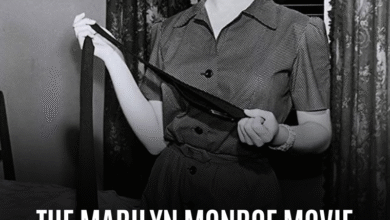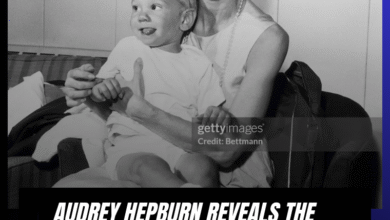The Movie Angelina Jolie Was Warned Against Making — And Why Her Friends Questioned It
OPINION: This article may contain commentary which reflects the author's opinion.
Angelina Jolie, one of the most prominent and versatile stars of modern cinema, has consistently chosen roles and projects that reflect her values, interests, and ever-evolving career trajectory. Since 2011, Jolie has appeared in just seven live-action movies, with her most notable roles in Disney’s Maleficent franchise and Marvel’s Eternals. But the actress has increasingly scaled back her on-screen appearances, intentionally focusing more on her family, humanitarian work, and filmmaking endeavors. During this period, she has directed five films, often highlighting smaller, intimate stories, many of which are close to her heart.
However, one film in particular—By the Sea (2015)—stands out in Jolie’s career, not only for its personal and experimental nature but also for the reservations expressed by those closest to her. This dramatic piece, written, directed, and produced by Jolie, was a deeply introspective film that featured her opposite then-husband Brad Pitt. It centered on a married couple struggling with their relationship while vacationing in a secluded French resort, a narrative that drew heavily from the couple’s own lives, and consequently, from the public fascination surrounding their real-life romance.
A Risky Proposition
From the outset, By the Sea was a project that raised eyebrows, even among Jolie and Pitt’s inner circle. As Jolie herself admitted in interviews, their friends had serious doubts about whether the project was a wise choice. “A lot of friends of ours thought it was a really, they didn’t say a bad idea, but they asked us a few times if we were sure we wanted to do it,” she recalled. The decision to cast themselves as a couple going through a marriage in turmoil immediately after their real-life wedding struck many as strange—and, in some circles, self-indulgent.
In a world where celebrity relationships are already under constant scrutiny, filming a movie about a disintegrating marriage shortly after tying the knot seemed like a bold, if not risky, move. The idea of two global superstars choosing to play such raw, vulnerable roles in a film that would inevitably be dissected by the media only added fuel to the fire. It felt as if the film would be impossible to separate from the constant tabloid narrative surrounding their highly publicized relationship.
The Vanity Project That Never Was
Despite the potential for an intriguing exploration of intimacy and marital strife, By the Sea did not resonate with audiences or critics as intended. The film’s reception was tepid at best, with critics largely dismissing it as a vanity project—a narrative that felt more personal than universal. The story, centered around a couple whose marriage is crumbling, was criticized for being overly indulgent and detached, ultimately failing to justify its metatextual layers.
Commercially, the film fared even worse. With a production budget of approximately $10 million, By the Sea struggled to recoup even a third of its costs at the box office. Despite its high-profile cast and Jolie’s direction, the film did not generate the kind of buzz one might expect from such a personal and star-driven project. It remains one of the most self-reflective—yet also self-sabotaging—films in Jolie’s career, offering an awkward snapshot of a marriage that would soon unravel in real life.
A Fictitious Snapshot of a Real Marriage
Looking back, it’s easy to see why Jolie’s friends questioned the wisdom of making By the Sea. At the time of its release, the couple’s personal struggles were not yet in the public spotlight, but in hindsight, the film’s narrative about a marriage in decline became eerily prophetic. Jolie and Pitt’s relationship, which had captured the public’s imagination for over a decade, would eventually disintegrate in a highly publicized divorce, marked by acrimony and media frenzy.
In this context, By the Sea now serves as a fictitious representation of a marriage that was already on the verge of collapse. The film, while perhaps intended to explore themes of emotional alienation and the fragility of love, ended up serving as a reflection of a very real and very public breakup. For Jolie, the project represents an experiment in vulnerability, but one that also turned into a cautionary tale about the risks of blending personal life with professional pursuits.
Conclusion: A Learning Experience
Despite the muted reception of By the Sea, it is important to recognize the deeper purpose behind the film. Jolie’s decision to take on such a deeply personal project was a bold artistic choice, one that allowed her to explore her own experiences and relationship dynamics on screen. Yet, in hindsight, the reservations of her friends—who questioned whether the film was a wise decision—seem prescient. The film, which may have once seemed like a creative challenge, is now viewed as a strange prelude to the very public breakdown of a marriage that had once captivated the world.
As Jolie continues to evolve as both a director and actress, her choice to scale back her onscreen roles and focus on more intimate, meaningful projects reflects a maturing perspective on her career and her life. While By the Sea may not have been the success she had hoped for, it remains a testament to the risks she is willing to take as an artist—risks that may, at times, prove to be valuable lessons for the future.



